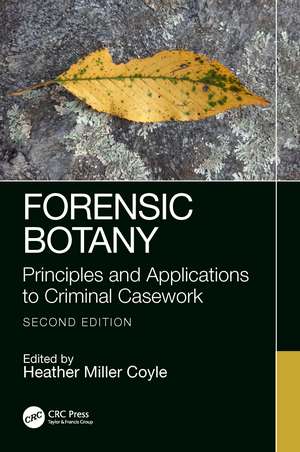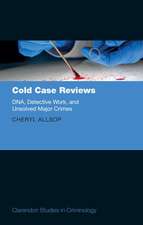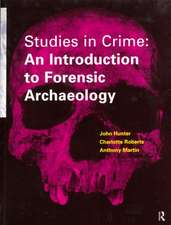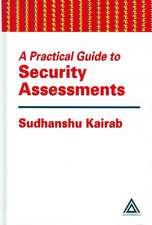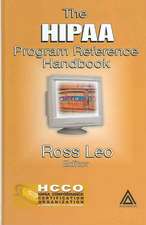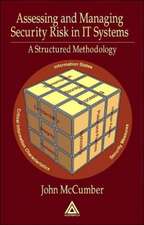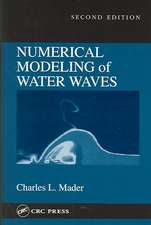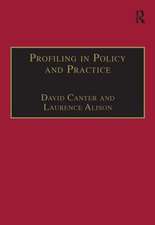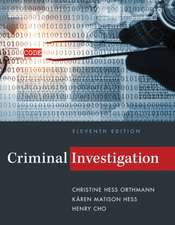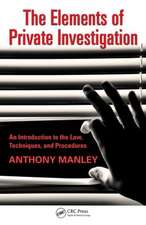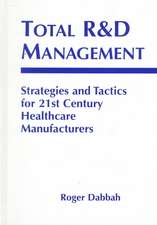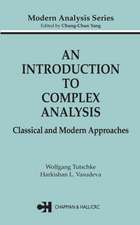Forensic Botany: Principles and Applications to Criminal Casework
Editat de Heather Miller Coyleen Limba Engleză Hardback – 26 aug 2024
In recent years, forensic botany and the use of various plant and plant‑derived evidence have been increasingly utilized in criminal investigations and court cases. Likewise, forensic palynology and other such terms have entered the vernacular as botanical sciences have widened the applications in which such evidence can help solve cases. This includes the use of current and emergent genetic markers and DNA technology, toxicology, diatoms, and pollen. The numerous advances since the last edition was published necessitated added coverage of the technology and testing capabilities that have achieved new levels as the field has developed.
The chapters are written by some of the top experts in the field. Every chapter in the Second Edition is fully updated, with several new chapters focusing on Random Amplified Polymorphic DNA (RAPD), Restriction Fragment Length Polymorphism (RFLP), and Amplified Fragment Length Polymorphism (AFLP), plant‑derived toxins and forensic toxicology, identifying ancient plants used in burial practices for dating sites, digested plants as evidence, and more.
Forensic Botany, Second Edition provides scientists working with DNA, trace evidence, and botanical evidence—as well as investigators and legal professionals—with a thorough understanding of the latest advances and current capabilities in utilizing such evidence in investigating and adjudicating criminal cases.
| Toate formatele și edițiile | Preț | Express |
|---|---|---|
| Hardback (2) | 544.85 lei 3-5 săpt. | +27.46 lei 10-14 zile |
| Taylor & Francis – 26 aug 2024 | 544.85 lei 3-5 săpt. | +27.46 lei 10-14 zile |
| Taylor & Francis – 15 sep 2004 | 1114.85 lei 6-8 săpt. |
Preț: 544.85 lei
Preț vechi: 592.22 lei
-8% Nou
Puncte Express: 817
Preț estimativ în valută:
104.27€ • 108.24$ • 86.94£
104.27€ • 108.24$ • 86.94£
Carte disponibilă
Livrare economică 01-15 martie
Livrare express 18-22 februarie pentru 37.45 lei
Preluare comenzi: 021 569.72.76
Specificații
ISBN-13: 9781439866740
ISBN-10: 1439866740
Pagini: 328
Ilustrații: 170
Dimensiuni: 156 x 234 x 24 mm
Greutate: 0.64 kg
Ediția:Revised.
Editura: Taylor & Francis
Colecția CRC Press
Locul publicării:Oxford, United Kingdom
ISBN-10: 1439866740
Pagini: 328
Ilustrații: 170
Dimensiuni: 156 x 234 x 24 mm
Greutate: 0.64 kg
Ediția:Revised.
Editura: Taylor & Francis
Colecția CRC Press
Locul publicării:Oxford, United Kingdom
Public țintă
Academic and Professional Practice & DevelopmentNotă biografică
Heather Miller Coyle is Associate Professor of Forensic Science at University of New Haven.
Cuprins
1. Introduction to Forensic Botany. 2. Basic Plant Biology. 3. Plant Cell Structure and Function. 4. Modes of Plant Reproduction. 5. Plant Diversity. 6. The Use of Biological and Botanical Evidence in Criminal Investigations. 7. Uses of Plant Anatomy, Taxonomy, and Ecology in Forensic Investigations. 8. Forensic Botany Cases. 9. Uses of Plants in Burial Practices. 10. Forensic Palynology. 11. Use of Diatoms and Pollen for Seasonal Calendar. 12. Plant Poisons and Toxicology. 13. Illegal Trafficking of Wood. 14. DNA Structure and Function. 15. An Overview of Historical Developments in Forensic DNA Analysis. 16. Classical and Future DNA Typing Technologies for Plants. 17. Plant Identification by DNA. 18. Wooden Stick Matches as Forensic Evidence. 19. Legal Considerations for Acceptance of New Forensic Methods in Court.
Descriere
Forensic Botany: Principles and Applications to Criminal Casework, Second Edition updates what, at the time, was the very first book published on the subject. This latest edition offers a concise introduction to plant identification and biology, genetics and how to utilize and apply botanical evidence in criminal cases.
Recenzii
"…very well written and informative, providing the reader with an excellent and concise introduction to plant biology, plant genetics, plant identification procedures, and the application of botanical evidence in criminal cases. All forensic scientists will enjoy reading the fascinating case examples highlighting the use botanical evidence. Scientists in forensic DNA typing analysis and trace evidence examination will value this book as an excellent reference text."
-Canadian Society of Forensic Science, Peter Bilous, M.Sc., Ph.D.
"This book provides an essential introduction to the field, to all those who have an interest in scenes of crime investigation as well as forensic pathologists … . [W]ell written … easy to read … [and] thought provoking. It is not often that one is introduced to a whole new area of forensic practice, and not have the slightest idea what it entails. With the benefit of this fairly unique book, no on need be in that position when his exciting field of forensic botany takes off."
- www.forensicmed.co.uk
"Good reference text on biology and its relationship to forensic science. Good illustrations, easy to read."
-Journal of the American Association of Forensic Dentists
"Coyle is a bone fide plant biologist having received a Ph.D, in plant biology from the University of New Hampshire … . She does a good job of making sure to direct her botanical summaries to forensics. Her descriptions of using plants as crime scene evidence are almost reminiscent of ethnobotanical descriptions. Coyle et al. keep us interested in their descriptions by not just explaining techniques but providing a variety of high-quality, pertinent examples to show how these techniques have been used in the past. The appendix, Considerations for the Use of Forensic Botanical Evidence: An Overview, is an excellent resource … . I like Coyle’s book and it would make an excellent addition to a forensic biologist’s library."
— Alfredo Gomez-Beloz, Center for World Indigenous Studies, Olympia, WA in Economic Botany 61(2) 2007
"Forensic Botany: Principles and Applications to Criminal Casework is packed with details – details that forensic scientists must note and perhaps use in their crime scene investigations."
– David M. Jarzen, Florida Museum of Natural History, University of Florida, in AASP Newsletter, June 2007, Vol. 40, No. 2
-Canadian Society of Forensic Science, Peter Bilous, M.Sc., Ph.D.
"This book provides an essential introduction to the field, to all those who have an interest in scenes of crime investigation as well as forensic pathologists … . [W]ell written … easy to read … [and] thought provoking. It is not often that one is introduced to a whole new area of forensic practice, and not have the slightest idea what it entails. With the benefit of this fairly unique book, no on need be in that position when his exciting field of forensic botany takes off."
- www.forensicmed.co.uk
"Good reference text on biology and its relationship to forensic science. Good illustrations, easy to read."
-Journal of the American Association of Forensic Dentists
"Coyle is a bone fide plant biologist having received a Ph.D, in plant biology from the University of New Hampshire … . She does a good job of making sure to direct her botanical summaries to forensics. Her descriptions of using plants as crime scene evidence are almost reminiscent of ethnobotanical descriptions. Coyle et al. keep us interested in their descriptions by not just explaining techniques but providing a variety of high-quality, pertinent examples to show how these techniques have been used in the past. The appendix, Considerations for the Use of Forensic Botanical Evidence: An Overview, is an excellent resource … . I like Coyle’s book and it would make an excellent addition to a forensic biologist’s library."
— Alfredo Gomez-Beloz, Center for World Indigenous Studies, Olympia, WA in Economic Botany 61(2) 2007
"Forensic Botany: Principles and Applications to Criminal Casework is packed with details – details that forensic scientists must note and perhaps use in their crime scene investigations."
– David M. Jarzen, Florida Museum of Natural History, University of Florida, in AASP Newsletter, June 2007, Vol. 40, No. 2
